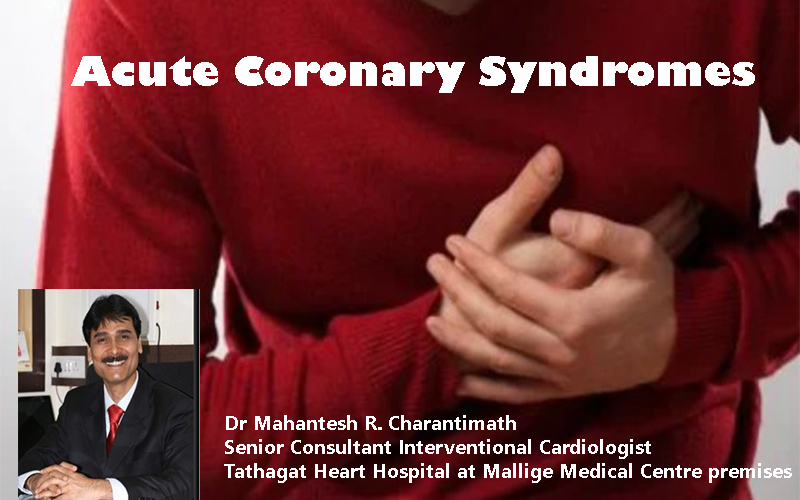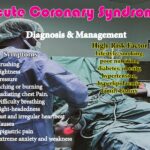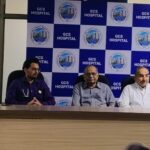Diagnosis and management of Acute Coronary Syndromes. ECG, Echocardiogram is a non-invasive test, Coronary angiogram, CTA, MPI and Blood tests are performed to aid in the diagnosis of ACS. Coronary heart disease and acute coronary syndrome remain predominant and the top cause of death in people over age group of 35 years
Acute coronary syndrome (ACS) talks about a group of diseases in which there will be sudden reduction in blood flow to the heart. ACS includes ST-elevation myocardial infarction (STEMI), non-ST elevation myocardial infarction (NSTEMI), and unstable angina (UA).


Coronary heart disease and acute coronary syndrome remain predominant and the top cause of death in people over age group of 35 years. ACS is associated with very high morbidity and mortality.
ACS are caused by varied mechanisms, in particular:
- Plaque rupture with inflammation – usually both local and systemic inflammation
- Plaque rupture without inflammation – leads to the formation of fibrin-rich red thrombi.
- Plaque erosion leading to non–ST-segment–elevation myocardial infarction.
- ACS without thrombus – epicardial arteries and also affect coronary microcirculation
Modern fast paced lifestyle, smoking, poor nutritional practices, increased incidence of diabetes; obesity, hypertension, hyperlipidaemia have been attributed for the high rates of acute coronary syndrome. A family history is also a high-risk factor.
The usual symptoms are substernal chest pain, often defined as crushing, tightness, pressure, aching or burning. Usually it starts radiating from the chest to the shoulders, arms, upper abdomen, back, neck and jaw. This usual symptom is not seen always, and the other chief complaints are difficulty breathing, light-headedness, fast and irregular heartbeat, nausea, epigastric pain, extreme anxiety and weakness. This highlights the role of the inter professional team to treat patients.
Electrocardiogram (ECG), Echocardiogram is a non-invasive test, Coronary angiogram, Computed tomography angiography (CTA), Myocardial perfusion imaging (MPI is an imaging technique widely used for diagnosis) and Blood tests are performed to aid in the diagnosis of ACS.
It is important to maintain a high degree of suspicion and vigilance while diagnosing patients with possible ACS. Treatment of ACS depends on whether it is a STEMI /NSTEMI or unstable angina. But a critical aspect is timely treatment and is best managed by an inter-professional team that includes the emergency department physician, cardiologist, internist, pharmacist, and primary caregivers. Beside this, public awareness and recognition of symptoms are vital.
Another important element of controlling ACS is public education about lifestyle modification and awareness of healthier life choices. Including cessation of smoking, maintain a healthy body weight, excise regularly and have healthy diet. These precaution and practices can aid in controlling this high mortality disease.


Dr Mahantesh R. Charantimath
Senior Consultant Interventional Cardiologist
Tathagat Heart Hospital at Mallige Medical Centre premises
No. 31/32, Crescent Road, Bengaluru – 01
Phone : 080- 2235 7777 | 99003 56000
E-mail: mahanteshrc67@gmail.com
http://tathagathearthospital.com/











